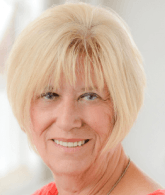5 environmental tips to surviving allergy season in LTC
The immune systems of many people are susceptible to pollens, molds and other airborne allergens. In fall, molds found in compost piles, and leaves also play a significant role in triggering allergic reactions. “The fall allergy season is usually the result of pollen from weeds. But after the first frost, it’s all about mold,” said John Dobrowski, MD, an otolaryngologist at Massachusetts Eye and Ear Infirmary, in an article.
As sweaters are being pulled out of storage and sturdier footwear replace sandals, it’s time to see what can be done to help people who live, work in or visit a long-term care facility be more comfortable. While you can’t avoid all the triggers that cause the sneezing, watering eyes and congestion associated with seasonal allergies, here are some tips to help reduce their impact.
- Stay indoors as much as possible. Pollen counts are highest between 5 a.m. and 10 a.m. If the outdoors cannot be avoided, make sure that the person with sensitivities has his or her nose and mouth covered with a mask or scarf.
- Keep windows closed. Although it might be a beautiful day, opening windows gives pollen and molds a way into the facility. Use air conditioning to moderate temperature.
- Maintain carpeting. Because allergens can become embedded in carpeting, frequent vacuuming is required. Vacuuming furniture is a good precaution if pets are present, to remove dander and any allergens they carry in from the outdoors.
- Change the air filters. This is a standard maintenance procedure for both heating and air conditioning systems and should also include cleaning vents and ducts.
- Removing decaying leaves. Make sure that your maintenance crew or landscaper removes this debris from the facility grounds, especially close to the building.
Pollens and molds are not the only allergens around but taking a common-sense approach to facility maintenance should help reduce the impact of seasonal allergy triggers for residents, staff and visitors.

Sandra Hoban was on I Advance Senior Care / Long-Term Living’s editorial staff for 17 years. She is one of the country’s longest-serving senior care journalists. Before joining Long-Term Living, she was a member of the promotions department at Advanstar Communications. In addition to her editorial experience, Sandi has served past roles in print and broadcast advertising as a traffic and talent coordinator.
Related Articles
Topics: Clinical , Executive Leadership , Facility management , Operations











